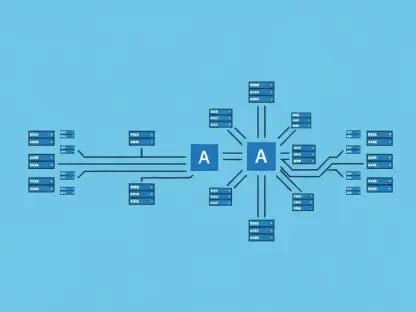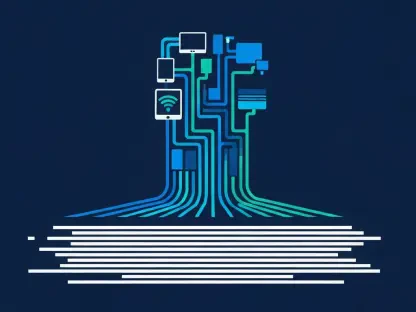In today’s conversation, we have Vijay Raina, an expert in enterprise SaaS technology, software design, and architecture. With his vast knowledge in cloud computing innovations, Vijay sheds light on hybrid cloud-fog architectures and the strategic deployment of Large Language Models (LLMs) through model pruning. This discussion will explore how these strategies are revolutionizing the landscape of AI by balancing resource efficiency with robust performance.
What are Large Language Models (LLMs) and what are some of their common applications?
LLMs, or Large Language Models, are AI systems designed to understand and generate human-like text. They underpin a range of applications, from conversational AI to automatic code generation and text summarization. These models have evolved to become critical in scenarios where understanding the nuance and complexity of human language is essential. They can assist in creating interactive chatbots, drafting code snippets, summarizing lengthy documents, and much more, making them incredibly versatile tools across various industries.
What challenges do LLMs face when trying to deploy them in environments with limited compute resources, like hybrid cloud-fog architectures?
Deploying LLMs in resource-constrained environments poses significant challenges due to their size and the compute demands. These models, often comprising millions of parameters, require substantial memory and processing power, typically available only in cloud data centers. In hybrid cloud-fog setups, the fog layer’s limited resources complicate hosting full-scale LLMs, necessitating techniques like model pruning to reduce computational and memory requirements while still maintaining acceptable levels of performance and accuracy.
Could you explain the concept of a hybrid cloud-fog topology?
A hybrid cloud-fog topology is an architecture that combines centralized cloud computing with decentralized fog computing. The cloud layer includes high-performance data centers equipped with powerful servers capable of extensive model training and large-scale data processing. In contrast, the fog layer consists of smaller, local data centers or edge devices that provide low-latency processing by being situated closer to the data sources. This setup leverages the strengths of both cloud and fog computing, optimizing performance by processing some tasks locally in the fog layer and others centrally in the cloud.
How does a hybrid cloud-fog topology optimize the deployment of LLM components?
In such a topology, optimization is achieved by distributing the components of LLMs strategically across both layers. The cloud handles heavy-duty tasks like model training and complex inference processes, while the fog layer manages real-time, latency-sensitive operations such as data pre-processing and filtering. By offloading simpler tasks to the fog layer, the cloud can focus its resources on more demanding processes, ultimately improving resource utilization and system efficiency.
Why don’t current LLMs fit well at the fog or edge layer?
Current LLMs are incredibly resource-intensive, requiring high memory, bandwidth, and often multiple GPUs for effective operation. The fog or edge layers simply lack the resources to host these full models. Therefore, model compression techniques, like pruning, become necessary to fit scaled-down versions of these models into the constrained environments of fog nodes without significant performance trade-offs.
What is model pruning and how does it help in deploying LLMs across hybrid cloud-fog topologies?
Model pruning is the process of reducing a model’s size by eliminating unimportant or redundant parameters, thus lowering the computational and memory requirements. This technique is crucial for enabling LLM deployment across hybrid cloud-fog architectures. Progressive pruning, specifically, allows for incremental reduction, creating a spectrum of model variants tailored for different performance and resource needs. This approach ensures that even resource-constrained environments like the fog layer can run efficient versions of these models without severe loss of accuracy or functionality.
What is the deployment strategy for using pruning in combination with placement in cloud-fog topologies?
The deployment strategy begins with training and profiling the model extensively in the cloud to understand which components can be pruned. Various pruned model variants are then matched to the capabilities of fog nodes based on their specifications. A hierarchical fallback mechanism ensures that any input exceeding a fog node’s capacity is escalated to the cloud for full evaluation. This ensures a blend of speed and accuracy, optimizing the deployment across differing infrastructure constraints.
What are some of the evaluation metrics that should be tracked when using progressive pruning?
When employing progressive pruning, it’s essential to monitor several key metrics to validate the effectiveness of the models. Accuracy is critical; models should maintain less than a 2% drop when deployed on fog nodes. Latency thresholds need to be below 100 ms for fog and 300 ms for cloud layers. Throughput is measured by tokens per second to ensure efficient processing, and memory usage must be kept within 80% of a device’s RAM to prevent overload and ensure stable performance.
How does progressive model pruning contribute to making hybrid AI more intelligent and responsive?
Progressive model pruning enhances hybrid AI systems by making them adaptable and resource-efficient. It enables the scalable deployment of LLMs, allowing parts of models to operate at the edge or fog layers without a significant dip in performance or accuracy. This adaptability not only conserves resources but also improves response times, making the AI systems more responsive to real-time data and dynamic operational scenarios.
In what types of applications can this approach of deploying LLMs in hybrid cloud-fog environments be particularly beneficial?
This approach is particularly beneficial in applications requiring real-time processing and low latency, such as smart city infrastructure, autonomous vehicles, and industrial IoT systems. It allows processing to occur closer to data sources, providing swift responses and efficient data handling. The combination of quick processing at the fog layer with comprehensive analysis in the cloud enables these systems to operate seamlessly, offering enhanced user experiences and operational efficiencies.









